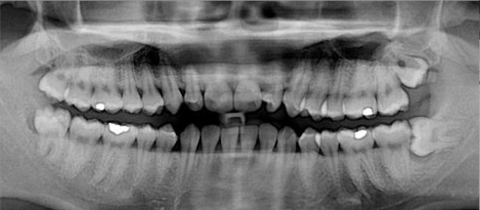Caffeine can make you jittery. It can keep you awake. And it can make you pee more often. That much we know for sure. Other allegations against caffeine are circumspect. No scientific studies have conclusively linked caffeine to high blood pressure, osteoporosis or arthritis. Actually, we have recently learned that coffee contains a variety of antioxidants which may even be beneficial to our health. Still, wisdom would dictate that we do not go overboard with our caffeine intake. While many people seem to guzzle those proliferating giant mugs of latte with no ill effects, there is no doubt that some get wired even from a small amount of caffeine and prefer their brew without this stimulant. Chemistry can accommodate them.
We don't really know why some plants produce caffeine. Perhaps they do so to ward off insects. Perhaps they release caffeine into the soil to do away with rival seeds. Perhaps they want to protect themselves from people who want to grind up their seeds and drink the extract. Now, some of those people want the extract without the caffeine. They want decaffeinated coffee! There are several processes that can accomplish this. They all rely on the fact that caffeine is soluble and all start with soaking the coffee beans in hot water. This extracts the caffeine, but it also extracts many of the flavor compounds. The idea now is to remove the caffeine from this extract and then reintroduce the flavor components back into the beans.
First a solvent is needed which does not mix with water, and in which the caffeine is more soluble than in water. The classic ones used have been methylene chloride and ethyl acetate. Since ethyl acetate is found in some fruits and vegetables, its use can be termed a "natural" process. This basically is a crock, because ethyl acetate is not found naturally in the amounts used in the decaffeination process. In any case, the water extract is shaken with the solvent which dissolves the caffeine and since the solvent does not mix with water it can be readily separated. The beans are then resoaked in the water to reabsorb the flavours. Of course, not all the flavor compounds are reabsorbed, so decaf will never taste exactly like regular coffee. Note that the extracting solvent never comes into contact with the beans themselves, so there is essentially no residue of the solvent in the coffee.
Despite this, people have been concerned about the use of "chemicals" to decaffeinate their coffee and processors have come up with other systems. Highly compressed carbon dioxide gas can be used to extract the caffeine from the beans. This is an efficient process and of course there is no residue to worry about. The Swiss water process is also heavily promoted and sometimes absurdly described as “chemical-free.”
Green coffee beans are soaked in water and the resulting “green coffee bean extract” is passed through an activated carbon filter that removes the caffeine. The problem is that the extract also contains hundreds of other compounds that are critical to coffee flavor, many of which would also be removed by the carbon filter. But there is a way around this. Preload the filter with chemicals that are unlike caffeine in molecular structure, but similar to other flavour and colour compounds found in coffee. Sugar and formic acid are the chemicals used. So obviously the process isn’t “chemical-free.”. Since the activated carbon’s adsorption sites for such chemicals are now occupied, the filter will not remove coffee components other than caffeine. The result is a green coffee bean extract that has the components of coffee except for caffeine.
The next step is to soak fresh green coffee beans in this extract. Since the solution is now already saturated with coffee compounds other than caffeine, it will only extract the caffeine leaving behind green coffee beans now devoid of caffeine. Roasting these yields decaffeinated coffee beans ready to be brewed. The caffeine rich solution can again be passed through the carbon filter to remove the caffeine and the now-caffeine-free green coffee bean extract can be used once more to remove the caffeine from yet another fresh batch of green coffee beans. Passing this solution through the filter again removes the caffeine and the cycle continues in this fashion.
Once the activated carbon becomes saturated with caffeine it can be recycled by heating to burn off the caffeine. Unlike other decaffeination processes, the caffeine is not recovered and cannot be sold, thereby increasing the cost of the process. Obviously there is a great deal of ingenious science behind the removal of caffeine from coffee beans but most coffee drinkers of course crave the caffeine and look upon decaf drinkers as whimps.







